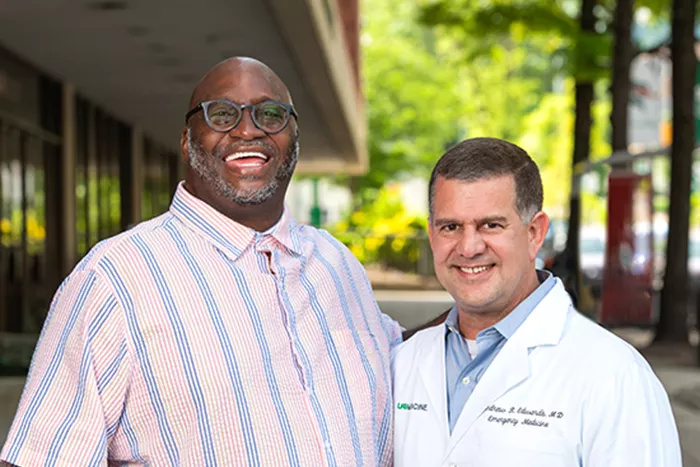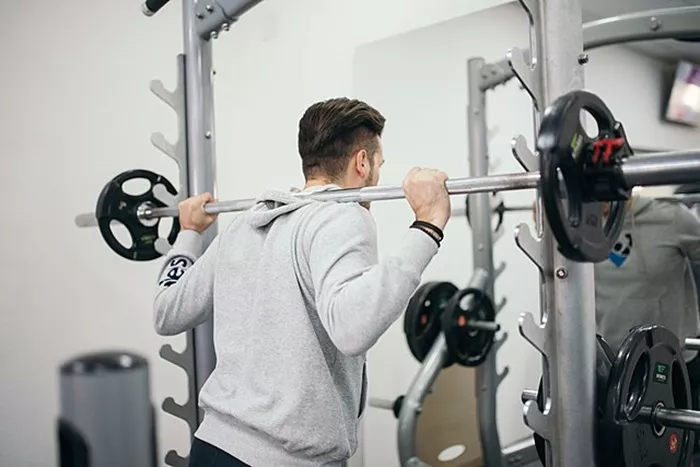For Floyd Lawson, a veteran, husband, grandfather, and gym regular, it started as a typical weekend workout at his local YMCA. He usually spends about two hours doing cardio, stretching, lifting weights, and then visiting the steam room. However, on a Saturday in the spring of 2024, his routine took a sudden turn.
After a round of crunches, Lawson felt an alarming drain of blood from his body. “I thought, ‘wow, let me compose myself,'” Lawson recalled. “And that is the last thing I remember until I saw my guardian angel, Dr. Andy.”
Timely Medical Intervention
By chance, Dr. Andrew Edwards, an emergency medicine physician at the University of Alabama at Birmingham (UAB), was working out at the same YMCA with his son. Seeing a group gathered around a man on the floor, he quickly ran over to help.
“I realized a man had collapsed and was suffering from what appeared to be cardiac arrest,” Edwards said. “A medical student and a nurse were already performing CPR. It was clear that early and effective CPR and defibrillation were crucial.”
After nearly two minutes of CPR followed by a shock from an automated external defibrillator (AED), Lawson’s pulse went out again. Edwards performed another round of CPR and defibrillation. Lawson regained consciousness after nearly 10 minutes. Edwards then coordinated with EMS to transport Lawson to UAB Hospital.
“It felt like I was put in the right place at the right time,” Edwards said. “Outcomes can vary if bystander CPR isn’t administered quickly and effectively. I’m glad we got him to UAB fast.”
The Importance of CPR
Edwards emphasized the importance of knowing CPR basics, as even low-quality CPR can be lifesaving. Cardiac arrest, where the heart stops beating unexpectedly, results in no blood flow to the body, leaving the individual unresponsive, with no signs of breathing and no pulse.
Ryan Coute, D.O., assistant professor at UAB’s Department of Emergency Medicine, provided guidance on administering CPR:
1. Attempt to wake the person by tapping their shoulder or chest and speaking loudly. If they do not respond, look for signs of breathing and feel for a pulse.
2. Immediately call 9-1-1 and begin CPR.
3. Begin hands-only CPR: Place the heel of one hand in the center of the chest, place your other hand on top, interlock your fingers, keep your elbows straight, and your shoulders directly above your hands. Push down hard and fast with your body weight, at least 2 inches deep, at a rate of 100-120 times per minute.
4. If uncomfortable providing rescue breaths, focus on chest compressions until 9-1-1 personnel arrive. If providing breaths, give two breaths after every 30 compressions and repeat.
5. If available, use an AED and follow its instructions.
“CPR can double the likelihood of survival for cardiac arrest victims,” Coute said. “Survival decreases by about 10% for every minute without CPR. If uncertain, call 9-1-1 for instructions from a medical dispatcher.”
A New Friendship
That day at the YMCA, Edwards and others performed hundreds of chest compressions, actions that undoubtedly saved Lawson’s life. Lawson reflected on the incident, noting that witnessing CPR in action could inspire others to learn the life-saving technique.
“When I got to UAB, it was clear I had a heart attack,” Lawson said. “I was perfectly healthy, and this happened at the gym of all places. I truly feel Dr. Andy is my guardian angel and that God put him there to save my life. If I had collapsed anywhere else, I might not be here today.”
Since the incident, Lawson and Edwards have formed a friendship, discovering they share much in common, including their faith. They plan to meet at the YMCA for a joint workout once Lawson recovers fully.
“I never thought I would be saved by a stranger performing CPR, which is why it’s so important everyone knows the basics of CPR,” Lawson said. “I don’t know what I can ever say to Dr. Andy for saving me. Thank you for not giving up on me.”
[inline_related_posts title=”You Might Be Interested In” title_align=”left” style=”list” number=”6″ align=”none” ids=”9790,9787,9784″ by=”categories” orderby=”rand” order=”DESC” hide_thumb=”no” thumb_right=”no” views=”no” date=”yes” grid_columns=”2″ post_type=”” tax=””]
































